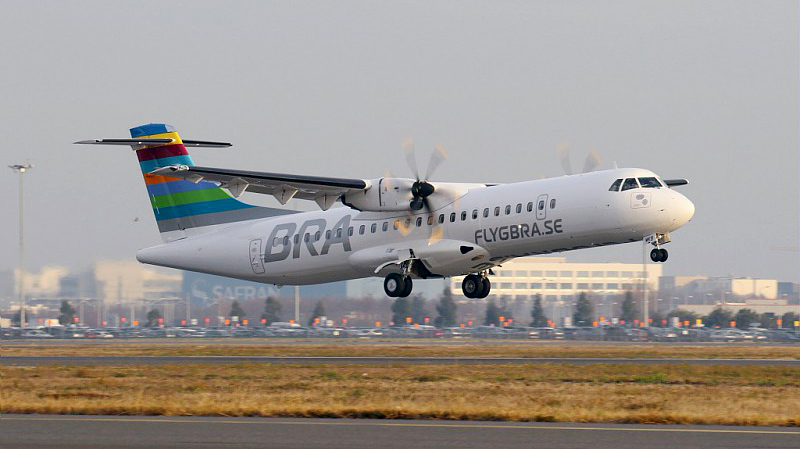N ot all that long ago, if you were flying as a passenger on a short flight to or from a small airport in the United States, chances were that you sat on an airplane equipped with propellors instead of jet engines which would buzz and whirr through the sky — and then, there were also those occasional flights which lasted two or more hours in one of those airplanes — until regional jet aircraft slowly replaced many of them, promising faster and quieter transportation than turboprop aircraft to markets which could not be served by mainline airplanes…
…but with uncomfortable seating configurations on some of them — as well as their purpose being stretched to their limits by airlines — regional jets generally became the scourge of frequent fliers. Worse is that the significant increase in the cost of jet fuel eventually generally meant poor economics in terms of financial operations for airlines; and some routes were eventually dropped, with some markets underserved — or unserved altogether.
Certain models of regional jet airplanes are also aging and will need to be replaced — but with what? Newer mainline aircraft which are fuel efficient but may not be economically feasible for some short routes to and from small markets; or newer versions of regional jet airplanes?
Will Turboprop Airplanes Replace Regional Jets in the United States?
ATR was one of the manufacturers of those turboprop airplanes during their former heyday — and the company is hoping for a comeback in the United States.
“Technology, profitability and comfort” are the words used to describe the new ATR 72-600 turboprop aircraft manufactured by ATR, which is based in Toulouse in southern France — and the company is seeking a renaissance of sorts for its airplanes in the United States, according to this article written by Ben Mutzabaugh of USA TODAY.
“ATR planes do fly for several small U.S. operators, but none that fly under the brand for any of the mainland USA’s major carriers. ATR hasn’t had a substantial foothold among mainland U.S. carriers since American’s American Eagle regional unit phased out the last of its once-large fleet of ATR turboprops in 2013.”
ATR does face competition from the likes of Bombardier — a company based in Canada which not only manufactures regional jet aircraft; but also the Q400 turboprop and other Q series propellor aircraft.
Arguments Supporting the Turboprop Airplane of Today
“Over 400 regional routes have been cancelled across the US since 2006”, according to this press release at the official Internet web site of ATR. “As of today, some 2,000 regional aircraft operate in the US, mainly regional jets. Over 30% of the routes operated by regional jets in the US are below 300 miles, a range where the operating costs and fuel-efficiency of the newest generation ATR-600s are unrivalled.”
The airplane purportedly boasts a wider passenger cabin and two rows of large overhead storage bins when compared to regional jet aircraft.
- Passenger capacity 50 to 78 seats
- Engines Pratt & Whitney 127M
- Maximum power at take-off 2,750 horsepower per engine
- Maximum weight at take-off 23,000 kilograms or 50,700 pounds
- Maximum load 7,500 kilograms or 16,500 pounds
- Maximum range with full passenger load 900 nautical miles or 1,665 kilometers or 1035 miles
Summary
While I do not believe that turboprop airplanes will obliterate regional jet airplanes in the United States, they may replace at least a part of the current fleet if the economics are favorable to airlines — and if the comfort and experience is favorable to passengers.
I never was much of a proponent of turboprop airplanes. The airplanes manufactured by ATR in the past were larger; but they felt to me like they lumbered through the sky. I have flown as a passenger on those airplanes in North America and in Europe — passengers typically boarded the aircraft from the rear; and that appears to be the case with the new ATR 72-600 aircraft — and although the experience was not bad, I personally found nothing spectacular about it…
…or let us just say that whenever I saw one of those turboprop aircraft awaiting me on the tarmac, I did not exactly jump up and down in excitement.
Then again, I typically keep an open mind and would be willing to try out being a passenger in the new ATR 72-600 aircraft if the opportunity arises — and I do know that there are those people who prefer turboprop aircraft.
Are you one of them?
An ATR 72-600 airplane operated by Braathens Regional is shown taking off from Blagnac airport in France. Photograph © 2016 by Pierre Barthe and ATR. Source: ATR.

